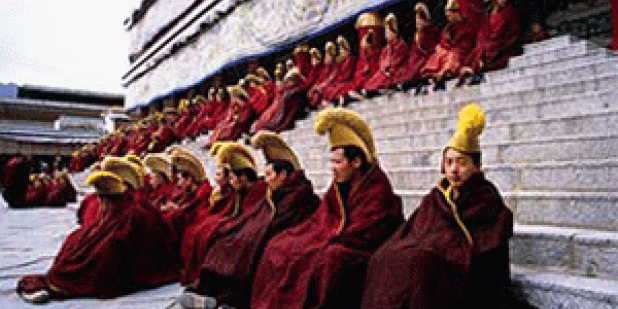Happy Lunar New Year from the USC US-China Institute!
Tibetan House Space at Labrang: An Architectural Inquiry into the Everyday Sacred and the Mundane
In this presentation, an overall view on the house space novice monks, nuns and the lay Tibetans will be rendered, followed by an introduction to three nunneries next to Labrang that were established at different time in history.
Where

Maggie Mei-Kei Hui (Assistant Professor, School of Architecture, The Chinese University of Hong Kong; HYI Visiting Scholar)
Discussant: Janet Gyatso (Hershey Professor of Buddhist Studies, Harvard Divinity School)
Labrang, located on the eastern edge of the Tibetan plateau, has always been an important Tibetan Buddhist monastery since its establishment in the early 18th century. It has since then attracted lay Tibetans to settle in close proximity and produced relatively dense lay villages surrounding the monastery. The settlement has continued to grow and respond to social changes through time. In the present day, local Tibetans continue to carry out their religious practices daily. How do religious practices influence the everyday architectural experiences of these locals, which extend from the domestic space to the public realm, and at times, into the monastery? It is argued that there are priorities and rules governing the interchange of the sacred and mundane space between the religious and daily living tasks. Such response influences the spatial organization, such as the reading of house form and settlement pattern. In this presentation, an overall view on the house space novice monks, nuns and the lay Tibetans will be rendered, followed by an introduction to three nunneries next to Labrang that were established at different time in history.
Featured Articles
We note the passing of many prominent individuals who played some role in U.S.-China affairs, whether in politics, economics or in helping people in one place understand the other.
Events
Ying Zhu looks at new developments for Chinese and global streaming services.
David Zweig examines China's talent recruitment efforts, particularly towards those scientists and engineers who left China for further study. U.S. universities, labs and companies have long brought in talent from China. Are such people still welcome?






